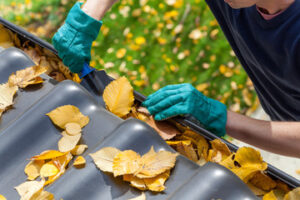Electrician Mount Pleasant maintains and repairs electrical power, lighting, communication, and control systems in homes and buildings. They also inspect power lines and machines to ensure safety standards.

These skilled tradespeople work with a variety of equipment and tools to perform their job duties. To be successful, electricians must adhere to strict safety protocols and demonstrate critical thinking skills when troubleshooting electrical problems.
Electricians install, maintain and repair electrical equipment and systems in homes, factories and offices. They use a variety of hand and power tools to carry out their work. They must also understand and follow national and local electrical codes and regulations.
Some electricians specialize in a particular type of electrical installation, such as residential wiring or commercial lighting. Others may concentrate on repairing electrical appliances or equipment, such as circuit breakers and transformers. This type of specialization can lead to higher wages and more job opportunities.
A good electrician is able to quickly and efficiently troubleshoot problems, diagnose issues and make the necessary repairs. They have a strong understanding of different electrical systems and the ability to work with the most current tools and equipment. In addition to their technical skills, they need excellent customer service skills in order to respond to customers’ questions and concerns.
During installation, electricians must carefully follow blueprints and technical diagrams to determine the location of wires and other components. They then use various hand and power tools to complete the work, such as conduit benders, screwdrivers, wire strippers, drills and saws. They must also be able to read and understand schematics, use meters and other testing devices and perform basic business management duties like maintaining records and submitting invoices.
Electricians are often required to work on ladders, scaffolds and roofs in order to reach difficult spots. They must be physically able to lift and move heavy materials weighing up to 50 pounds. They must also be able to stand for long periods of time and be able to think critically in stressful situations.
The work of an electrician can be dangerous, so it’s essential that they follow all relevant safety standards and guidelines. This is especially important when working with live electrical wiring. In addition to safety, good electricians are committed to their craft and take pride in delivering quality work. They are also committed to keeping up with advancements in their field and learning new techniques. This can help them stay competitive and continue to deliver top-quality services to their clients.
Repair
The repair and maintenance duties of an electrician are pivotal in ensuring that electrical systems operate safely and smoothly across an array of environments. These responsibilities include examining and inspecting electrical components to identify hazards, defects, or the need for adjustment or repair. In addition, the job involves ensuring compliance with local and national electrical codes and regulations.
In some instances, the repair and maintenance tasks of an electrician may involve rewiring or reconfiguring electrical components to achieve safer and more efficient performance. For example, if a wire has been exposed or damaged, the electrician must carefully reroute or replace the cable to avoid any further issues. The position also entails testing equipment to measure voltage levels and trace the source of electrical problems.
As part of their daily duties, electricians must also maintain a clear record of all work they perform. This allows the employer to track progress and identify any areas that may require additional attention in the future. This is especially important for larger projects that may have many moving parts. Additionally, a good electrician is always prepared to respond to emergency service calls and other urgent requests from the field.
A skilled electrician will possess a variety of tools, including hand and power tools for working with electrical wiring and fixtures. For instance, an electrician might use a fish tape to pull conductors through conduits or a conduit bender to make accurate bends in conduits. Electricians are also responsible for maintaining a variety of technical documents, including blueprints and schematics.
An electrician’s career can take many different directions, depending on their area of expertise. For example, some electricians focus on residential work while others specialize in commercial or industrial settings. Other electricians choose to specialise in particular areas, such as solar energy or refrigeration.
Specialising is a great way to broaden an electrician’s experience and increase their earning potential. However, it’s not for everyone. If you’re considering a career change, it’s best to consider other factors as well, such as the cost of living in your region and how far you would like to travel for work. Additionally, consider whether you want to manage a team of electricians, as this could significantly increase your salary.
Maintenance
Electricians are tasked with ensuring that the power, communications, lighting, and control systems in homes, offices, factories, hospitals, and other buildings function properly. This is achieved by installing and maintaining electrical wiring, fixtures, and equipment that supply electricity to a variety of appliances and machines that make our lives and work easier and more comfortable.
The daily activities of an electrician include reading blueprints and technical diagrams, executing electrical wiring plans, repairing electrical components and fixtures, maintaining electrical systems and fixtures, and inspecting and testing power lines and electrical equipment to identify problems and ensure compliance with safety regulations. A high school diploma is typically sufficient to start working as an electrician. Additional qualifications include completion of an apprenticeship program or a formal vocational training course, and a valid electrician’s license.
Maintaining electrical wiring, equipment, and fixtures requires an eye for detail, critical thinking, and excellent communication skills. An experienced and qualified electrician is able to spot problems quickly, troubleshoot solutions, and resolve issues in accordance with local and national safety codes. They also prepare sketches and follow blueprints to determine the layout of new wiring or equipment. Other maintenance duties include examining circuit breakers, transformers, and other systems to identify possible hazards and defects, repairing or replacing them as needed.
Keeping up with the latest developments in electrical technology and tools is an important aspect of being an electrician. This is especially true for those who work on industrial electrical projects. The ability to read and understand technical diagrams is essential, as well as having the physical strength to lift heavy equipment and parts. Other necessary skills include being able to identify the different colors of wire insulation and special markings that indicate their connection to specific devices or power sources, and a good understanding of electrical theory. Some electricians also choose to become certified in specialized areas of the field. This can be beneficial for career advancement and earning higher pay scales. It can also lead to greater opportunities for employment and project work. This is particularly true if an electrician specializes in installing or maintaining high-voltage electrical systems.
Troubleshooting
Electricians often work with complicated and sometimes dangerous electrical systems in a variety of settings. They must adhere to all applicable safety regulations and undergo frequent training to ensure their skills remain current. Many also have a flexible schedule that can include evenings and weekends.
Some electricians focus on a specific type of equipment, while others may be called upon to troubleshoot and maintain an entire system of power lines or other electrical infrastructure. For example, those who specialize in wiring homes and buildings are known as wiremen, while those who work on transmission lines or other electrical utility infrastructure are called linemen. Other electricians are specialists in the installation of renewable or green energy components and systems, or they might be tasked with installing elevators and other specialized equipment.
Regardless of their area of expertise, all electricians must be able to read blueprints and technical drawings and understand how to install, replace or repair the systems they are working on. Additionally, they must have knowledge of the relevant codes and be able to perform inspections of existing electrical systems. If they work on public utility lines, they may need to be able to climb poles or use a lift bucket to access the necessary areas of the power grid.
Some electricians choose to join a trade union, which may give them benefits like health and dental coverage, life insurance, 401K options and paid time off. In addition, their employers often provide them with tools and safety equipment, as well as the opportunity to take classes and participate in training programs. This allows electricians to advance into higher-level positions that offer greater pay and responsibilities. It is important for an electrician job description to clearly describe the duties and responsibilities of the position, as well as any other special considerations or requirements that might be pertinent. This will help potential candidates to determine if the role is a good fit for their skills and interests. It is also helpful to include the salary range and benefits that are typical for the position in your area.



